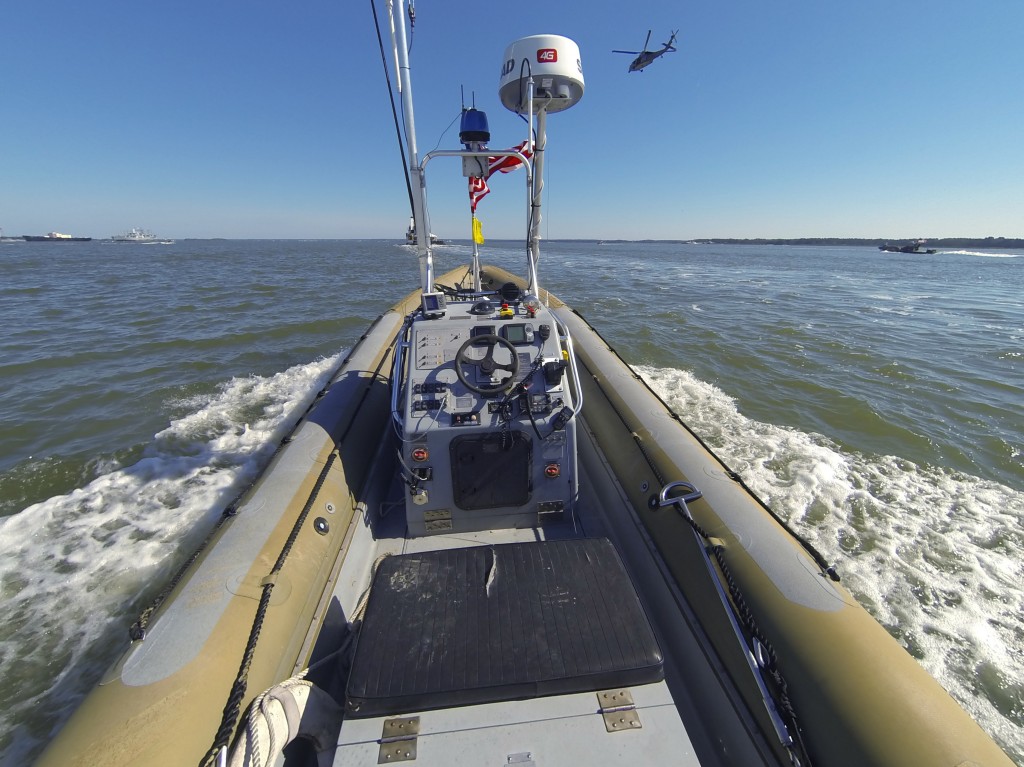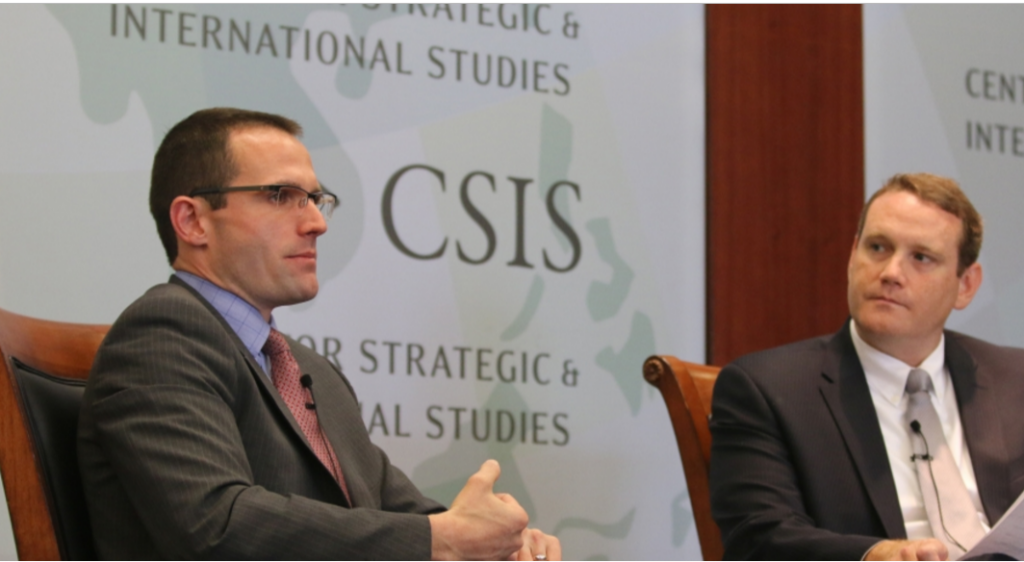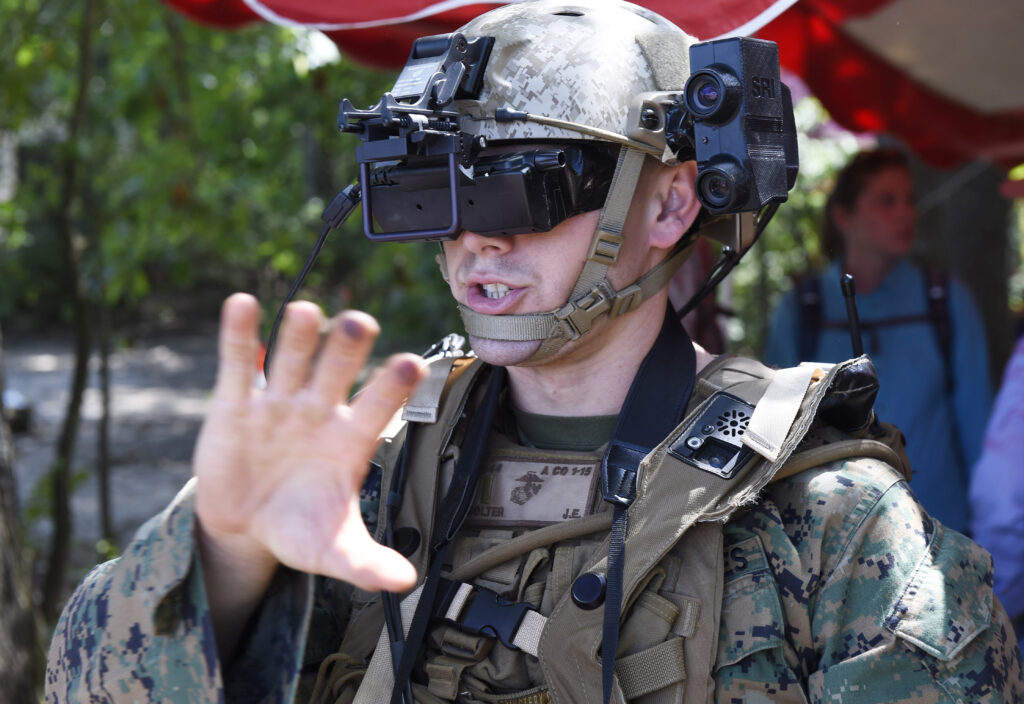Google Cars, Pokemon Go, & The Future Of War: Roper Interview Part II
Posted on

A Navy patrol boat converted to operate unmanned as part of an Office of Naval Research experiment in autonomous “swarms.”
William Roper is “buying time” for the rest of the Pentagon, he told us in a rare interview. His Strategic Capabilities Office finds near-term but game-changing upgrades for existing weapons systems, preserving American advantage over rapidly advancing adversaries while DARPA and Defense Department labs develop a new generation of breakthroughs. Yesterday, we wrote about Roper’s overall approach. Today, we get into specific technologies.
Robot Boats & Google Cars
Unmanned vehicles are a great example of how Roper’s near-term approach diverges from the longer-term Third Offset Strategy. DARPA, famed for long-range longshots, recently commissioned the world’s largest unmanned ship, the 130-foot Sea Hunter (aka ACTUV). Meanwhile, however, the Strategic Capabilities Office is working with the Navy on “autonomy kits” that can be installed aboard a conventional vessel to let it operate unmanned. After the unmanned mission, the kit can be taken back off, if desired, to let the boat operate with a human crew again.
SCO is working on various Navy small craft, one of the largest being the new Mark VI patrol boat. They’re not optimized for unmanned operations — they have a lot of hardware to support a human crew, for example — but, said Roper, “we start with the ships we have.”

Secretary Carter and SCO director Roper (far left) in the control room for an unmanned boat at the Naval Undersea Warfare Center
While purpose-built unmanned designs like Sea Hunter are maturing, the Navy can add autonomy kits to a vast number of vessels already in service and use them in new ways. The retrofitted craft can do less than a purpose-built robo-boat will, but they can do it now. Ultimately, by the time the thoroughbred robots do enter service, the Navy will already have years of experience with autonomy kits, creating a cadre of skilled operators and tacticians who can make the most of unmanned vessels.
A similar logic governs Roper’s examination of unmanned ground vehicles. DARPA and the Army have struggled for over a decade to build truly autonomous robots able to find their own way on the ground, a much more complex task than flying through empty air. Meanwhile Google, Tesla, and others have invested billions in self-driving cars.
Civilian vehicles designed to drive on the highway in peacetime aren’t yet able to maneuver off-road and under fire. But commercial industry is investing so heavily, and the underlying information technology is advancing so rapidly, that the military should take advantage. “My hope,” Roper said last week at the Center for Strategic and International Studies, “is that we will find a sweet spot (to) go out and start working with existing technologies, (so) when future technologies that allow us to go off-road mature, we’ll already have experience.”

Roper with Andrew Hunter at CSIS.
Software & Big Data
Not all technologies are tangible. Adding new software to existing platforms can make them operate in ways their designers never intended. That’s how SCO achieved one of its signature successes to date, sponsoring a Navy proposal to reprogram the SM-6 missile defense interceptor to strike surface ships as well. The physical missile is the same; what’s different is software, the way it operates, and above all the effect on a potential enemy. And because it’s essentially a software upgrade, the dual-mode SM-6 is can be fielded quickly.
Meanwhile, SCO and the Marine Corps are beta testing another big software project, which Roper expects to enter service in some of the military’s four-star Combatant Commands (COCOMs) within a year.
The problem they’re seeking to solve? Current military command-and-control systems — and conventional military mindsets — can track physical threats like tanks, ships, planes, and missiles. But they can’t capture the intangible political, social, and economic activity that drives events. Fortunately, private-sector marketing departments have spent fortunes on “big data” software to figure this stuff out.
“You can go into an operations center today, you’ll see an air picture right beside a maritime picture right beside a land picture” — all showing physical objects that may be used in a conflict — “but there’s no information picture” explaining the intangible factors that actually cause conflict, Roper told me. “That involves things from social media to periodicals — both scientific and daily — (to) stock markets.”
Fortunately, SCO doesn’t have to invent the technology involved, just tailor it. The commercial world already tracks people’s spending and social media habits with at-times Orwellian thoroughness. (Roper promises SCO will anonymize its data to protect privacy). “The marketing world aggressively tries to understand, synthesize, find patterns, in this kind of information because it helps them make smarter real-time choices,” Roper said. “We believe there’ll be an analog for us.”
“Thus far in our beta testing with Marines,” Roper said, “they’ve been able to do things and see things that were never possible before.”

A Marine tries out the AITT (Augmented Immersive Team Training) helmet at Quantico.
High Tech, Muddy Boots
Getting big data into big headquarters is just step one. In the slightly longer term, Roper would like to exploit the heavy commercial investment in augmented reality — driven by games like Pokémon Go — to display big data in intelligible form for frontline ground troops.
A soldier or Marine could use a handheld device or even a flip-down visor to show, for example, which buildings are occupied by friendly troops and which are unsecured, or what neighborhoods have strong anti-American sentiment, or even where a suspicious electromagnetic signal is coming from. A network would pull in information from widely scattered sensors, big data software would sort out what mattered, and personal devices would display it intelligibly.
“We think augmented reality can be game-changing,” Roper said. “It’s a technology that’s going to be matured, pushed by the video game industry, that is focused on taking large amounts of complicated information and displaying it in an intuitive and actionable way. It would be really wise to follow that as opposed to trying to make up our own approach.”
Augmented reality displays of big-data findings would be particularly useful in cities, where the sheer density of people, structures, and technology creates a social, physical, and electromagnetic environment far more complex — and potentially far more lethal — than anything in the natural world. “Urban conflict may be the most challenging we face,” Roper said. “That’s one of the reasons why we’re working on big data so heavily.”
 That’s also part of the reason Roper is increasingly focusing on the Army. Much of SCO’s highest-profile work to date has been with the Air Force and Navy: the dual-mode anti-air/anti-ship SM-6 missile, for example, or the prospective “arsenal plane” filled with long-range missiles and linked to distant scouts, manned and unmanned, which transmit it target data. But looking ahead, Roper sees tremendous potential for the historically lower-tech ground forces.
That’s also part of the reason Roper is increasingly focusing on the Army. Much of SCO’s highest-profile work to date has been with the Air Force and Navy: the dual-mode anti-air/anti-ship SM-6 missile, for example, or the prospective “arsenal plane” filled with long-range missiles and linked to distant scouts, manned and unmanned, which transmit it target data. But looking ahead, Roper sees tremendous potential for the historically lower-tech ground forces.
“I’m actually very optimistic about what the Army and Marines can do to leap ahead,” Roper told me, “if we can find a way to bring in commercial tech and not let our desire for perfect systems, built to the nines, get in the way of good-enough solutions that we can buy off the shelf.”
“The Army and the Marine Corps have a greater chance of benefiting from most of the commercial technology we see in development,” Roper said. Why? Because companies are constantly competing to come up with better and more powerful technology that an individual person can easily carry or wear, he said: “It’s ground forces that will have the greatest chance to leverage that.”
Subscribe to our newsletter
Promotions, new products and sales. Directly to your inbox.
